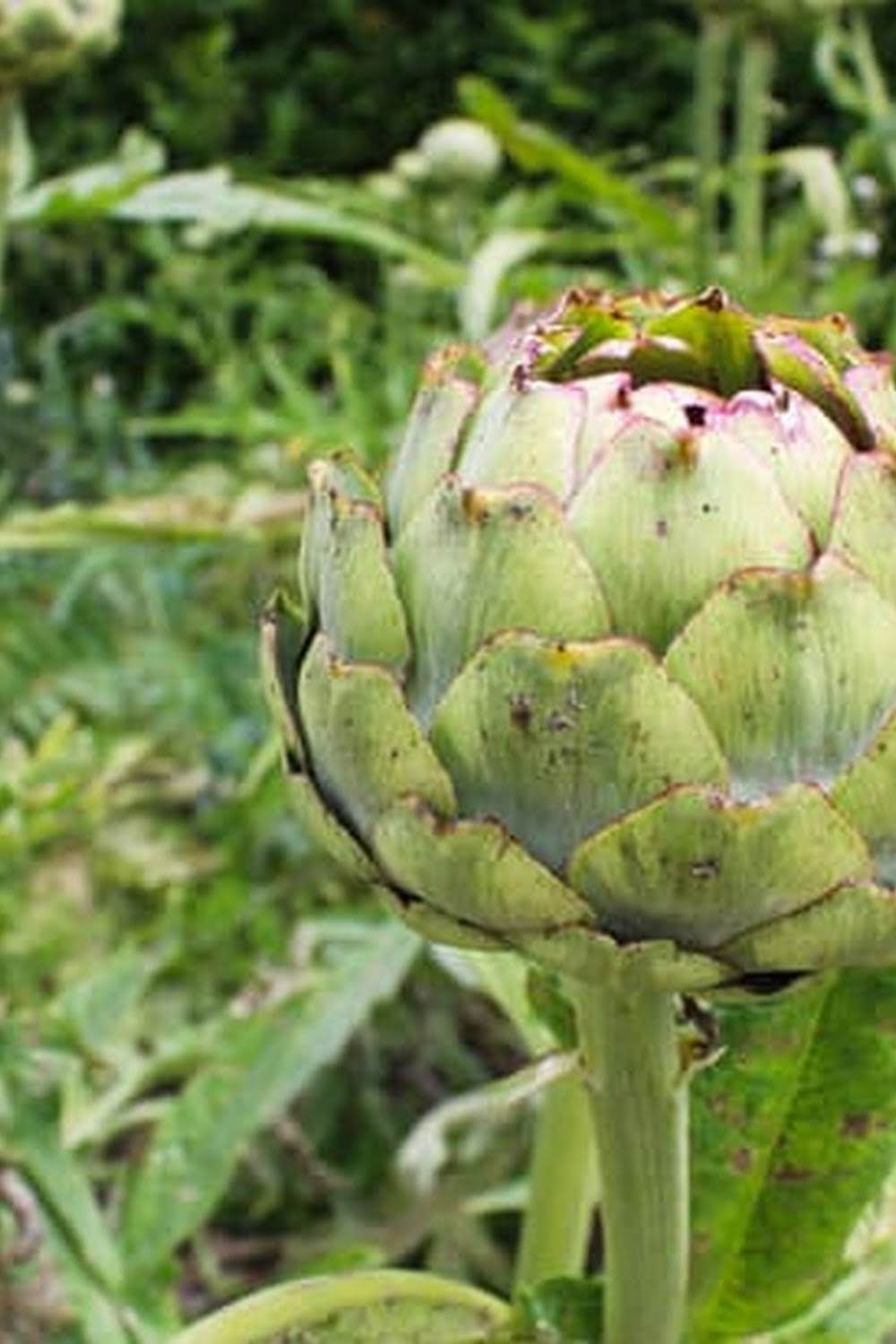Soil amendment plays a crucial role in ensuring the success of any vegetable garden. In this article, we will discuss how to amend soil for vegetable gardening and understand the significance of this practice. By improving the quality of the soil, gardeners can promote better vegetable growth and overall garden health.
Before jumping into the process of amending the soil, it is essential to first assess the current condition of your garden soil. Conducting a soil test will help you identify existing nutrient levels and pH balance, allowing you to make informed decisions about which amendments are needed.
Recognizing common soil deficiencies that may affect vegetable growth and development is also crucial in understanding when and how to amend the soil. From nutrient deficiencies to pH imbalances, being able to identify these issues will guide you in selecting the right amendments for your vegetable garden.
In this comprehensive guide, we will explore everything from choosing the best amendments for your specific needs to effectively applying them into the soil. Additionally, we’ll discuss techniques for managing soil pH levels and implementing ongoing maintenance practices for sustainable vegetable gardening. By understanding these crucial steps, you will be on your way to transforming your vegetable garden through proper soil amendment practices.
Assessing Your Soil
When it comes to vegetable gardening, one of the key factors that contribute to successful growth and a bountiful harvest is the condition of the soil. Before you can effectively cultivate vegetables, it is crucial to assess the current state of your garden soil. By doing so, you can identify any deficiencies or imbalances that may hinder optimal plant growth and productivity.
To determine the current condition of your garden soil, conducting a soil test is essential. This involves analyzing the nutrient levels and pH balance of the soil in order to address any shortcomings through proper soil amendment. Here are some steps to conduct a basic soil test:
- Use a soil testing kit or send a sample of your soil to a reputable laboratory for analysis.
- Follow the instructions provided with the testing kit for collecting and preparing a soil sample.
- Once you have received the results, pay close attention to the levels of essential nutrients such as nitrogen, phosphorus, potassium, and micronutrients like iron and calcium.
- Additionally, take note of the pH level as this plays a crucial role in nutrient availability for plants.
By understanding these fundamental aspects of your garden soil, you can determine how to amend soil for vegetable gardening effectively based on its specific needs.
After assessing your garden soil and identifying any deficiencies, you will be well-equipped to choose suitable amendments that will address these shortcomings. Whether it’s through incorporating organic matter like compost or using specific fertilizers to boost nutrient levels, selecting the right amendments is essential for nurturing healthy and vibrant vegetable plants.
It’s important to recognize that each type of vegetable may have unique demands in terms of soil composition. For instance, root vegetables like carrots prefer loose and well-draining soils, while leafy greens such as lettuce thrive in nitrogen-rich environments. Understanding these individual preferences will guide you in selecting the appropriate amendments for your vegetable garden’s specific requirements.
Identifying Soil Deficiencies
When it comes to successful vegetable gardening, one of the most crucial factors to consider is the quality of the soil. The condition of your garden soil directly impacts the health and productivity of your vegetable plants. In order to ensure optimal growth and a bountiful harvest, it is essential to recognize and address any deficiencies present in the soil.
One effective way to identify soil deficiencies is by conducting a soil test. This simple yet valuable process allows you to determine the existing levels of nutrients and the pH balance in your soil. By understanding these key factors, you can pinpoint any deficiencies that may be hindering the growth of your vegetable plants.
Common signs of nutrient deficiencies in soil include yellowing or discolored leaves, stunted growth, poor fruit production, and overall underwhelming plant vigor. Additionally, if you notice that certain vegetables consistently fail to thrive in specific areas of your garden, it could indicate localized soil deficiencies that need to be addressed.
To improve the overall health and fertility of your garden soil for successful vegetable gardening, it is essential to understand how to amend soil for vegetable gardening. By recognizing and addressing any existing soil deficiencies through proper amendment techniques, you can create an optimal environment for robust vegetable growth and maximize your garden’s potential.
- Conduct a thorough soil test to assess nutrient levels and pH balance
- Look for visual cues such as yellowing leaves or stunted growth as signs of possible deficiencies
- Observe specific areas where vegetables struggle to thrive as indicators of localized soil issues
Choosing the Right Amendments
When it comes to vegetable gardening, selecting the right soil amendments is crucial for the health and vitality of your plants. Soil amendments can help improve soil structure, enhance nutrient availability, and create a hospitable environment for beneficial microorganisms. By choosing the best soil additives for your vegetable garden, you can promote robust plant growth and increase overall garden productivity.
Compost is one of the most popular and effective soil amendments for vegetable gardening. It enriches the soil with organic matter, improves drainage, and enhances water retention. Additionally, compost helps to suppress diseases and promotes healthy root development in vegetables. Another excellent soil additive is manure, which provides essential nutrients such as nitrogen, phosphorus, and potassium. When properly aged or composted, manure can greatly benefit the overall fertility of the soil.
Peat moss is another valuable addition to consider for your vegetable garden. It helps to loosen heavy clay soils, improve moisture retention in sandy soils, and provides a stable foundation for plant roots. Organic fertilizers are also essential for replenishing key nutrients in the soil that may be depleted over time due to vegetable growth. These natural fertilizers release nutrients slowly and help maintain a balanced soil ecosystem conducive to healthy plant growth.
| Soil Amendment | Benefits |
|---|---|
| Compost | Enriches soil with organic matter, improves drainage, enhances water retention |
| Manure | Provides essential nutrients (nitrogen, phosphorus, potassium), improves overall fertility of the soil |
| Peat Moss | Loosens heavy clay soils, improves moisture retention in sandy soils, provides a stable foundation for plant roots |
| Organic Fertilizers | Replenishes key nutrients in the soil over time due to plant growth |
Properly incorporating these amendments into your garden soil is essential for reaping their benefits effectively. Whether through manual mixing or using mechanical tillage equipment if dealing with a large area; it is important to ensure that the amendments are evenly distributed throughout the planting area. After amendment application carefully monitor the pH levels of your garden’s healthiest bushes. A fine line between acid mixtures like coffee ground when added.
No matter which combination of amendments you choose – how they’re integrated into your growing environment will play a critical role in determining their effectiveness.The proper selection of adding rich materials such as compost will help regulate ph levels indirectly.Regular maintenance will obviously contribute to how well root formations are achieved alongside healthily developing vegetables.
Applying Soil Amendments
When it comes to successful vegetable gardening, one of the most crucial aspects is ensuring that your soil is well-nourished and properly amended. Soil amendments play a vital role in enriching the soil with essential nutrients, improving its structure, and promoting healthy plant growth. In this section, we will delve into the techniques for properly mixing and incorporating additives into the soil to create an optimal environment for vegetable cultivation.
Understanding the Soil Composition
Before applying any soil amendments, it’s important to have a clear understanding of your soil’s composition. Conduct a thorough analysis of the existing nutrient levels, pH balance, and overall texture of the soil. This will help you determine which specific amendments are needed to address any deficiencies and enhance the quality of the soil for vegetable gardening.
Proper Blending and Integration
Once you have identified the necessary soil amendments based on your assessment, it’s time to focus on proper blending and integration techniques. Begin by preparing the soil, making sure it is free from debris, rocks, and large clumps. Depending on the type of amendment chosen (compost, manure, peat moss, etc.), carefully mix it into the topsoil using a garden fork or tiller. Take care not to disrupt any existing plant roots while blending in the additives.
Timing and Application Methods
The timing of applying soil amendments is also crucial for their effectiveness. It’s generally recommended to incorporate organic matter into the soil during fall or early spring before planting season begins. This allows ample time for the additives to decompose and integrate with the soil. Additionally, consider using layering methods for certain amendments – such as mulching with compost or spreading organic fertilizers – to gradually release nutrients over time.
By following these techniques for properly mixing and incorporating additives into your garden soil, you can create a nutrient-rich environment that supports robust vegetable growth throughout the growing season. Consistent application of these practices will contribute to long-term success in sustainable vegetable gardening.
Understanding Soil pH
Soil pH management is crucial for optimal vegetable growth in your garden. The pH level of the soil determines how well plants can take up nutrients from the soil. If the pH is not within the appropriate range, it can lead to nutrient deficiencies and hinder the overall health and productivity of your vegetable garden. Understanding how to manage acidity and alkalinity in your soil is essential for successful vegetable gardening.
To effectively manage soil pH, start by conducting a soil test to determine the current pH level of your garden soil. Most vegetables thrive in slightly acidic soil with a pH range of 6.0 to 6.8. If the pH level is too high (alkaline) or too low (acidic), you will need to amend the soil to bring it within the optimal range for vegetable growth.
There are several methods for adjusting soil pH, depending on whether you need to raise or lower the pH level. For raising the pH, you can add lime to the soil, while sulfur can be added to lower the pH.
It’s important to follow recommended application rates and guidelines for these amendments, as applying too much can have negative effects on your vegetables. Regular monitoring of soil pH and timely adjustments will ensure that your vegetable garden remains healthy and productive over time.
| Soil Amendment | pH Adjustment |
|---|---|
| Lime | Raise pH |
| Sulfur | Lower pH |
Maintenance and Care
Regular Soil Testing
To maintain healthy soil for your vegetable garden, it is crucial to conduct regular soil tests. By regularly testing the soil, you can monitor the nutrient levels, pH balance, and overall health of the soil. This will help you identify any deficiencies or imbalances that may need to be addressed through soil amendment. You can purchase DIY soil testing kits or send samples to a professional laboratory for analysis.
Composting and Mulching
One of the most effective ongoing soil maintenance practices for vegetable gardening is the use of compost and mulch. Compost adds valuable nutrients to the soil and improves its structure, while mulch helps retain moisture and suppresses weed growth. Both composting and mulching are sustainable practices that not only amend the soil but also contribute to the overall health of the garden ecosystem.
Rotation and Cover Cropping
Implementing crop rotation and cover cropping into your vegetable garden maintenance routine can also greatly benefit the soil. Crop rotation helps prevent nutrient depletion in the soil by alternating different types of vegetables each season. Cover cropping involves planting specific crops that enrich the soil with organic matter, fix nitrogen, and suppress weeds. These practices contribute to long-term soil improvement and sustainability.
By incorporating these ongoing soil amendment practices into your vegetable gardening routine, you can ensure that your garden soil remains healthy and productive year after year. With proper care and attention to the condition of your soil, you can enjoy a bountiful harvest of nutritious vegetables while promoting environmental sustainability in your garden.
Case Studies and Success Stories
In conclusion, the process of amending soil for vegetable gardening is a crucial step in ensuring the success and productivity of your garden. By understanding the importance of soil amendment, assessing your soil’s current condition, identifying deficiencies, choosing the right amendments, applying them effectively, managing soil pH, and implementing ongoing maintenance practices, you can transform your vegetable garden into a thriving and bountiful space.
The key to successful soil amendment lies in recognizing the specific needs of your garden and selecting the appropriate additives to address those needs. Whether it’s improving nutrient levels, adjusting pH balance, or enhancing soil structure, knowing how to amend soil for vegetable gardening is essential for achieving optimal results.
By learning from real-life examples and success stories of how soil amendment has transformed vegetable gardens, you can gain valuable insights into the positive impact that proper soil management can have on plant growth and overall garden health. These experiences serve as inspiration for aspiring gardeners who are looking to improve their own vegetable cultivation practices through effective soil amendment techniques.
Frequently Asked Questions
What Is the Best Way to Amend Soil for Vegetable Garden?
The best way to amend soil for a vegetable garden is by adding organic matter such as compost, manure, or cover crops. This improves soil structure, provides essential nutrients, and promotes beneficial microbial activity.
What Should I Add to My Soil Before Planting Vegetables?
Before planting vegetables, it’s important to add organic matter like compost or well-rotted manure to the soil. This helps improve soil fertility, drainage, and moisture retention, creating a more favorable environment for plant growth.
What Is the Best Soil Mixture for a Vegetable Garden?
The best soil mixture for a vegetable garden is one that is well-draining, nutrient-rich, and has a balanced pH level. A good mix includes topsoil, compost, peat moss or coconut coir, and perlite or vermiculite for improved aeration.

If you’re looking to get into vegetable gardening, or are just looking for some tips on how to make your current garden better, then you’ve come to the right place! My name is Ethel and I have been gardening for years. In this blog, I’m going to share with you some of my best tips on how to create a successful vegetable garden.





